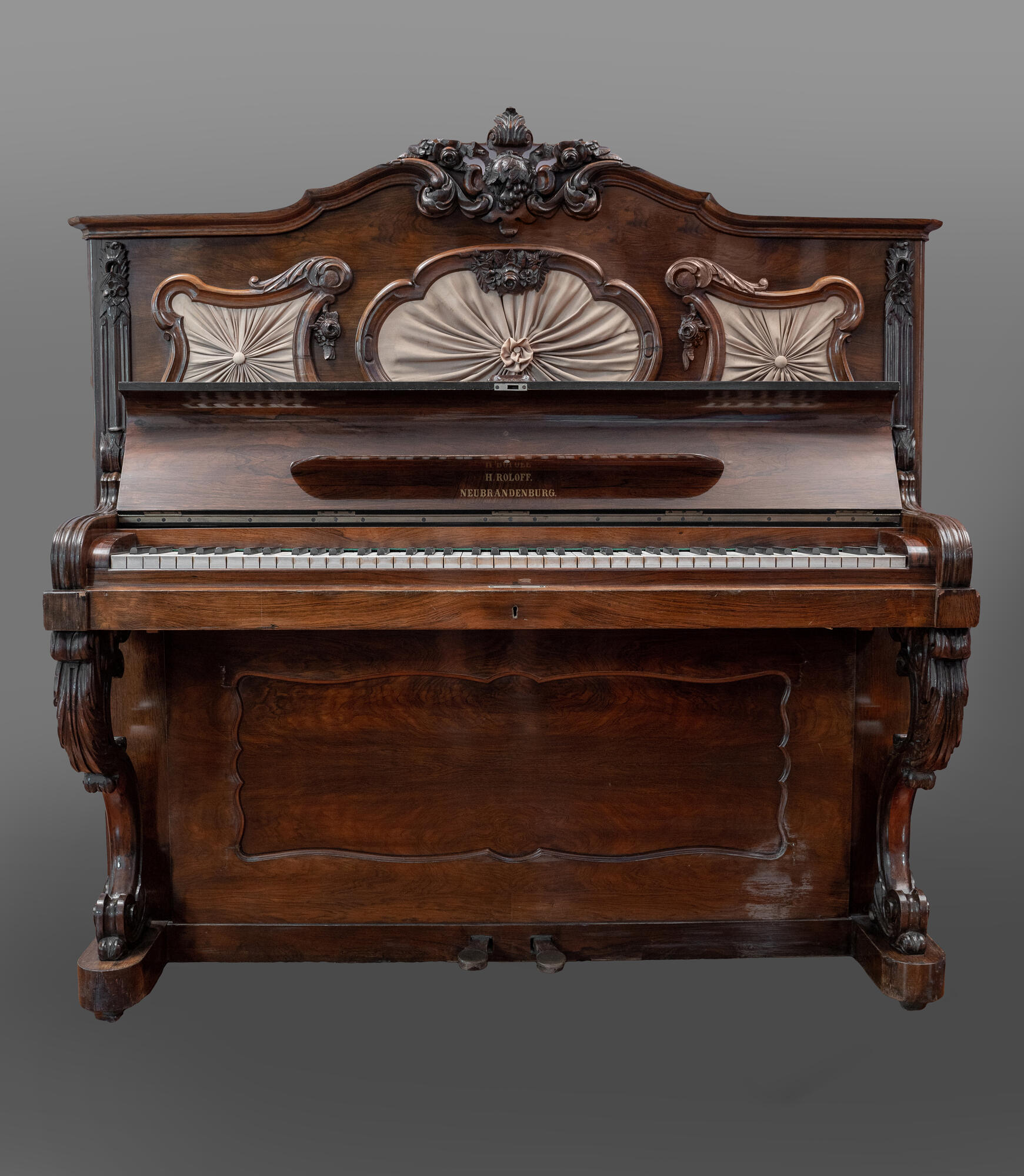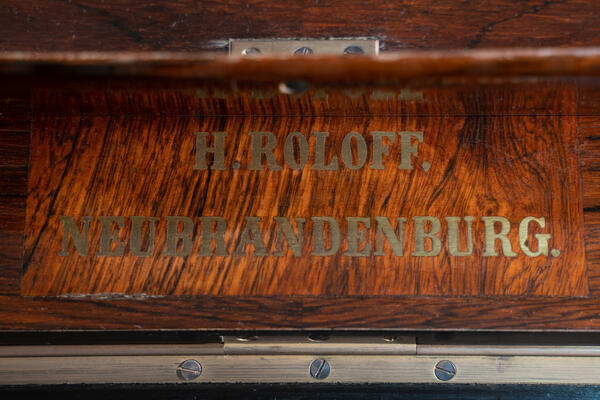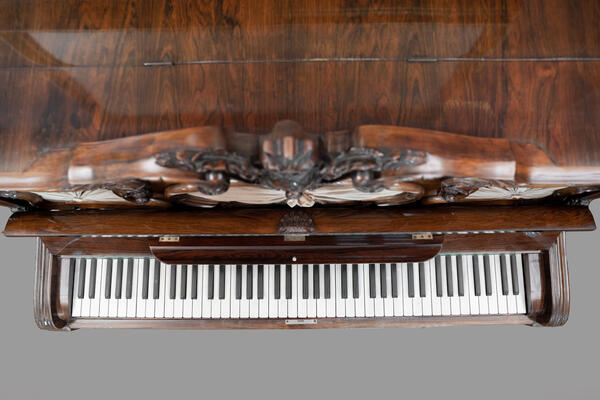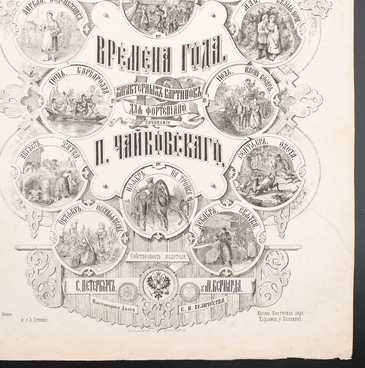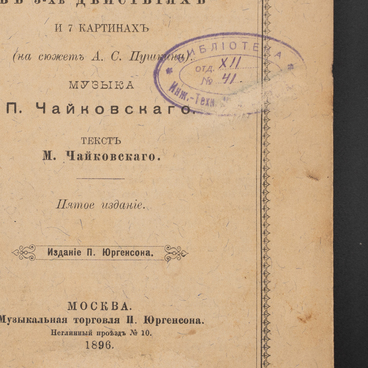The piano was made in a workshop of the German piano manufacturer “H. Roloff” in Neubrandenburg.
The piano factory was open from 1830 to 1908. For many years it was run by the brothers Heinrich and Wilhelm, after which August Roloff took over the management. In 1865, the factory was bought by the German manufacturer Grotrian-Steinweg.
The rapid development of piano manufacturing in the second half of the 18th — 19th century resulted in many different shapes and designs of the instruments, available for purchase. Thus, to distinguish their pianos, the Roloff workshop used various ways of increasing the sound of the musical instrument. For home playing, pianos with a lot of space at the feet were very popular: the pedals were not covered by the wooden lower soundboard, but elegantly decorated with rods and snails on the sides. In the piano presented in the museum, the upper soundboard is not entirely made of wood, it features three “windows” draped with fabric, which makes the piano louder.
The spread of home music playing in the 19th century made these musical instruments an integral part of one’s house. Pianos were designed in accordance with the style of the Victorian era — the era of romance and eclecticism with its abundance, imagination, and rich diversity. During this period, parts of the piano case were richly decorated with carved twisted ribbons, garlands, leaves and vines.
For centuries, highly skilled cabinet makers diligently worked on creating decorative elements. Later, when the techniques of manufacturing household items were improved, the maker of musical instruments himself decorated them with a combination of different wood tones, inlays, mother-of-pearl, ivory, gems and precious stones, as well as metal elements. He would also paint them, depicting individual objects, intricate ornaments, scenes from life and surrounding nature.